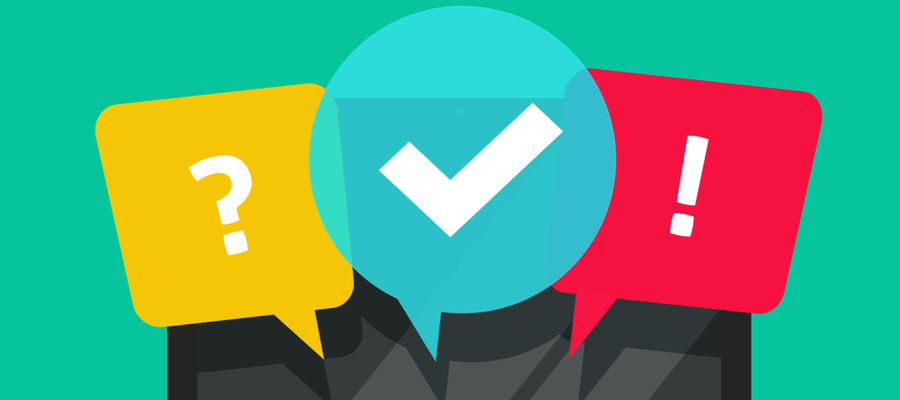Are you aware of the latest findings in neuroscience regarding our learning mechanisms? Do you know the benefits of empathy pedagogy? Do you know that teachers need to be particularly wary of certain cognitive biases? Test your knowledge by answering the following five questions.
1. True or false? Listening to a story activates more brain regions than getting a rational explanation.
CORRECT ANSWER
TRUE
Listening to a story activates more brain regions than hearing a rational explanation. However, there are a few rules to follow to ensure that a story becomes an effective learning tool. The story should:
- be appropriate and credible for the audience it is intended for;
- have an increasing level of suspense;
- feature a protagonist who takes on a challenge or resolves an emotionally and intellectually charged conflict.
For more information: The adult brain learns best with stories
2. Which of the following statements about attention is incorrect?
A) At the brain level, attention is the act of favouring a particular group of neurons at the expense of others.
B) Attention mechanisms are concentrated in a specific area of the brain.
C) The attentional system is under the influence of working memory.
CORRECT ANSWER
B.
Attention mechanisms are not concentrated in a specific area of the brain. Although it is perceived as a single sensation, attention results from the intervention of several mechanisms in the cortical and subcortical regions, from the parietal lobe (at the back of the brain) to the frontal lobe (at the front).
For more information: Deciphering Attention
3. Neuroscientist Stanislas Dehaene has identified the four pillars of learning, four factors that he believes are necessary for learning to occur. What are they?
A) Attention, active engagement, feedback and consolidation.
B) Attention, motivation, active engagement and consolidation.
C) Attention, active engagement, repetition and consolidation.
CORRECT ANSWER
A.
The four pillars of learning, according to Stanislas Dehaene, are attention, active engagement, feedback and consolidation. However, motivation is necessary for attention and repetition is essential for consolidation.
For more information: Neuroscience: learning in 4 steps
4. Complete the following statement. Several answers may be correct.
Adopting an empathic approach can allow the teacher to…
A) reduce the stress of the learners.
B) reduce one’s stress.
C) have a clearer perception of reality.
D) be less prone to prejudice and less vulnerable to cognitive distortions.
CORRECT ANSWER
ALL THESE ANSWERS ARE CORRECT
Adopting an empathic approach in practice can allow the teacher to reduce not only the stress of his learners but also his own. This approach would also allow them to have a clearer perception of reality and be less prone to prejudice by protecting themselves from emotional states that can lead to cognitive distortion.
For more information: Online training in an empathic mode
5. Select the correct term to complete each of the following statements about cognitive bias.
Terms: curse of knowledge, biased analysis and judgment, cognitive resistance, cognitive biases
A) Cognitive bias is a form of thinking that appears to be wrongly based on logical and rational reasoning and leads to ________.
B) Some 250 ________ are known to date.
C) Cognitive biases that deserve special attention in education include: the Pygmalion effect, the bias blind spot, the halo effect and the ________.
D) To combat cognitive biases, it is recommended to practice ________.
CORRECT ANSWER
The complete, correct statements are as follows:
A) Cognitive bias is a form of thinking that appears to be wrongly based on logical and rational reasoning and leads to biased analyses and judgments.
B) Some 250 cognitive biases are known to date.
C) Cognitive biases that deserve special attention in education include: the Pygmalion effect, the bias blind spot, the halo effect and the curse of knowledge.
D) To fight against cognitive biases, it is recommended to practice cognitive resistance.
For more information:
Author:
Catherine Meilleur
Creative Content Writer @KnowledgeOne. Questioner of questions. Hyperflexible stubborn. Contemplative yogi.
Catherine Meilleur has over 15 years of experience in research and writing. Having worked as a journalist and educational designer, she is interested in everything related to learning: from educational psychology to neuroscience, and the latest innovations that can serve learners, such as virtual and augmented reality. She is also passionate about issues related to the future of education at a time when a real revolution is taking place, propelled by digital technology and artificial intelligence.







Leave A Comment